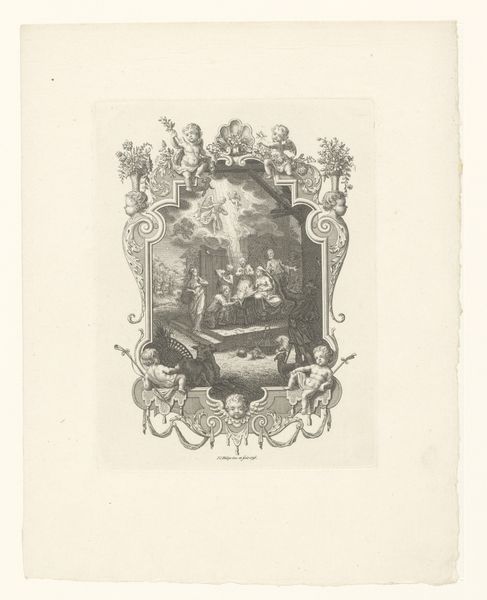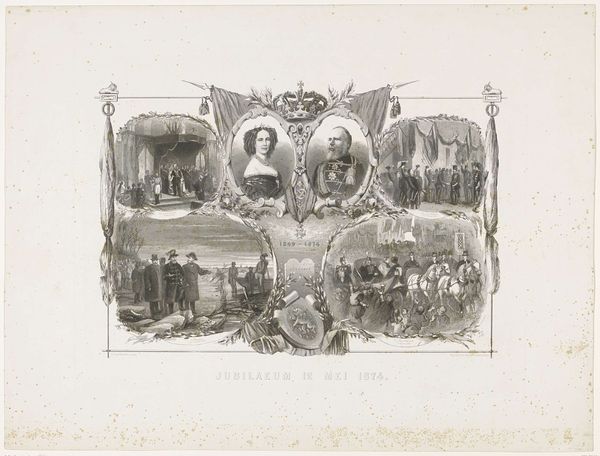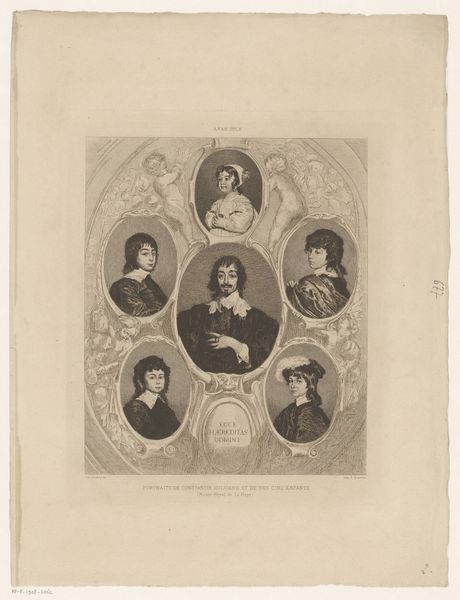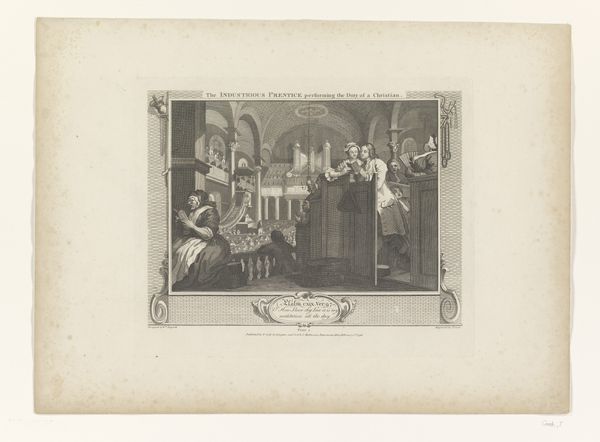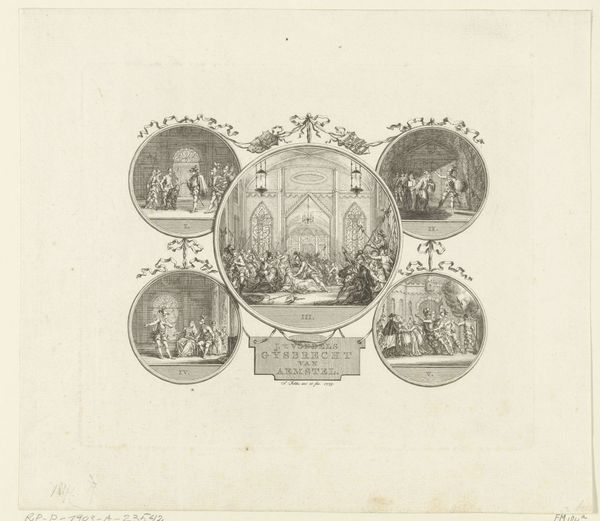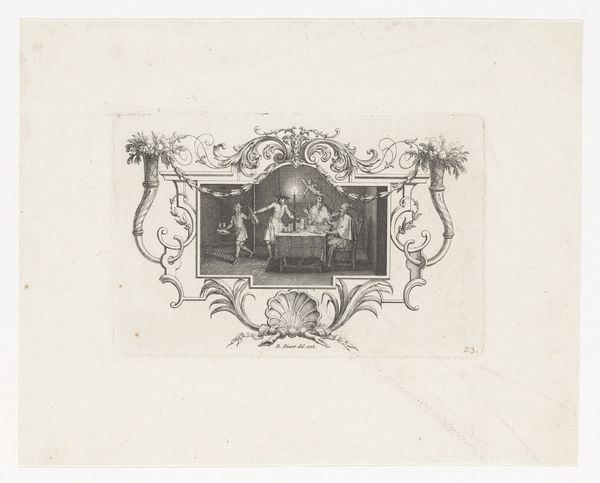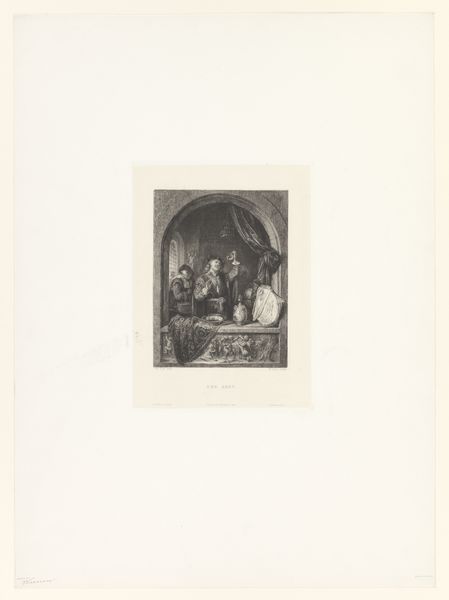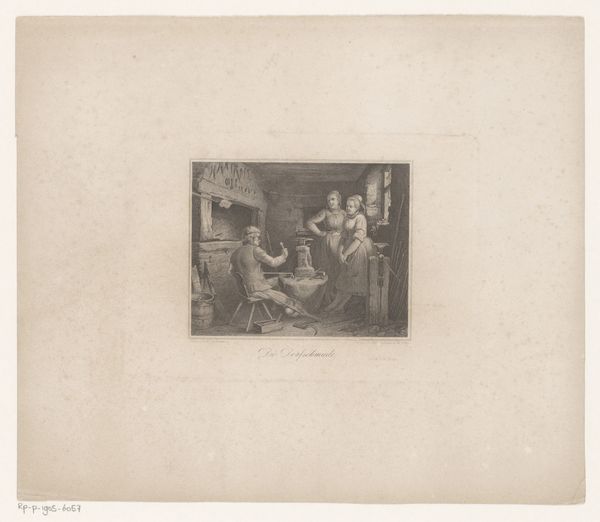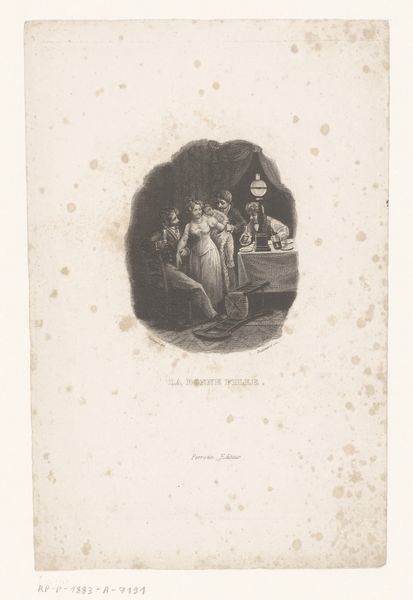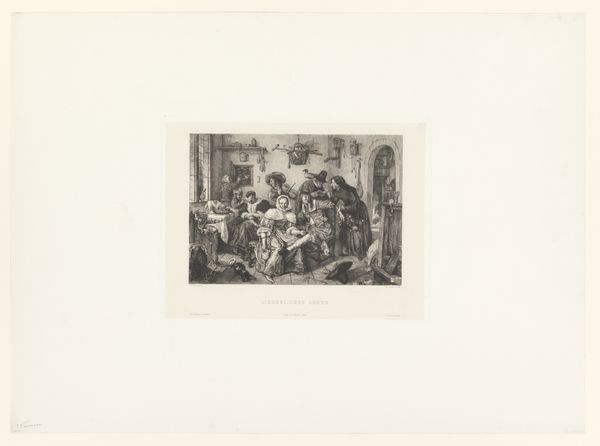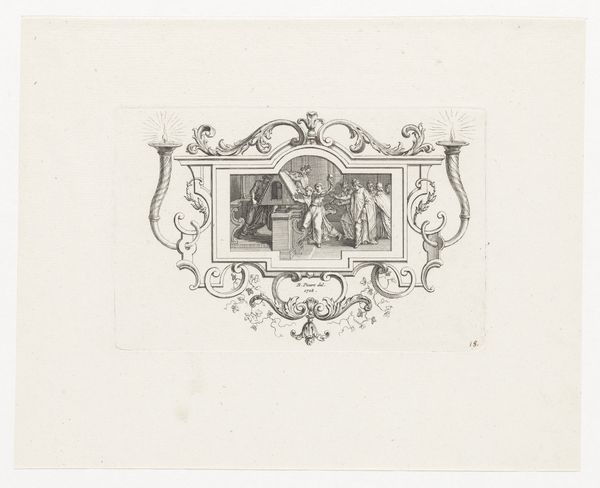
print, engraving
#
portrait
# print
#
11_renaissance
#
history-painting
#
engraving
Dimensions: height 266 mm, width 275 mm
Copyright: Rijks Museum: Open Domain
Curator: At first glance, I see tension. Everyone's leaning in, either listening intently or gesturing passionately. The image is monochromatic, which gives the gravity of the moment prominence. Editor: Precisely. The artwork before us, titled "Luthers colloquium in Marburg, 1529," by Willem Steelink, produced between 1854 and 1856, captures a pivotal moment during the Reformation. The use of engraving as a medium feels significant, giving it an archival quality that suits the historical theme. Curator: The central image depicts the theological debate surrounded by portraiture, so you've got concentric frames representing the real with the idealized? I like how the framing gives importance to each face, which otherwise would blend into one visual representation of the historic event. Editor: Absolutely. The portraits are of key figures like Luther himself, Zwingli, and others deeply embroiled in the debates over the Eucharist and other theological points. Curator: Symbolically, the setting itself – a grand room filled with solemn men – conveys a sense of authority, even of impending power plays. Look at the dark garments against the relatively stark background. What statements are they trying to project about themselves and their status? Editor: The setting reinforces their self-perceived roles as interpreters and arbiters of religious truth. Remember that at the Marburg Colloquy, they tried to achieve doctrinal unity amidst growing fragmentation within Protestantism, and these dark, contrasting garments symbolize the weight of tradition, even while breaking from Rome. They represent a struggle to redefine authority. Curator: And there are botanical elements interweaving those frames, ivy maybe? The organic around these figures is a deliberate reminder of mortality and perhaps nature's witness to this debate. I wonder if it also refers to something continuous, to survival? Editor: That's astute. Ivy, a symbol of fidelity and remembrance, could represent both a connection to the past and an enduring impact of these decisions on the future of Christianity, for better or worse, depending on where you stand. There's a constant negotiation between remembrance of historical fidelity and hope for continuity through historical upheavals. Curator: Reflecting on Steelink’s artwork, I keep thinking about the symbolic power vested in gatherings like this – dialogues, colloquies – that shape not only religious doctrines but our entire cultural landscape. Editor: It's a stark visual reminder that faith, power, and knowledge are always deeply entwined, shaping our histories in complex, and sometimes conflicted, ways.
Comments
No comments
Be the first to comment and join the conversation on the ultimate creative platform.
